The second-generation Supercaliber from Trek picks up where the previous bike left off, but with extra travel and updated geometry to make it more capable when taking on modern cross-country tracks.
In essence, the Supercaliber is designed to deliver the pedalling efficiency of the best hardtails, but also some of the comfort and control that comes courtesy of rear suspension.
The catchily named 80mm-travel SLR 9.9 XX AXS Gen 2 embodies that design philosophy almost perfectly on the trail.
Press the pedals and this thing accelerates with ease, getting up to speed quickly, then really coming to life.
Despite the presence of the SIDLuxe IsoStrut rear shock, the Supercaliber doesn’t isolate you entirely from the trail.
This is an out-and-out race bike and, as such, impacts are muted and compressions quelled, just enough to prevent knocking you off line or stifling momentum.
For close to £11,000 and weighing a scant 9.62kg, that’s exactly what you’d expect, though.
Trek Supercaliber SLR 9.9 XX AXS Gen 2 frame and suspension

Trek offers the Gen 2 Supercaliber in SLR or SL versions of the frame.
According to Trek, the SLR frame uses a higher-modulus carbon fibre layup compared to the SL and doesn’t feature any internal cable tubing in a bid to save weight (around 200g). That may make maintenance a touch trickier when it comes to internally routing cables and hoses.
Compared to the old Supercaliber, the Gen 2 frame now gets more rear-wheel travel, rising from 60mm to 80mm.
This is delivered using the SIDLuxe IsoStrut, developed in conjunction with RockShox.
Trek say the IsoStrut, which nestles deep within the heavily recessed top tube and is wrapped in the extended seatstays, is designed to be a structural part of the frame.
This helps eliminate the twist and flex you might get from a more traditional design, encompassing a regular shock and hardware, along with multiple links and pivots.
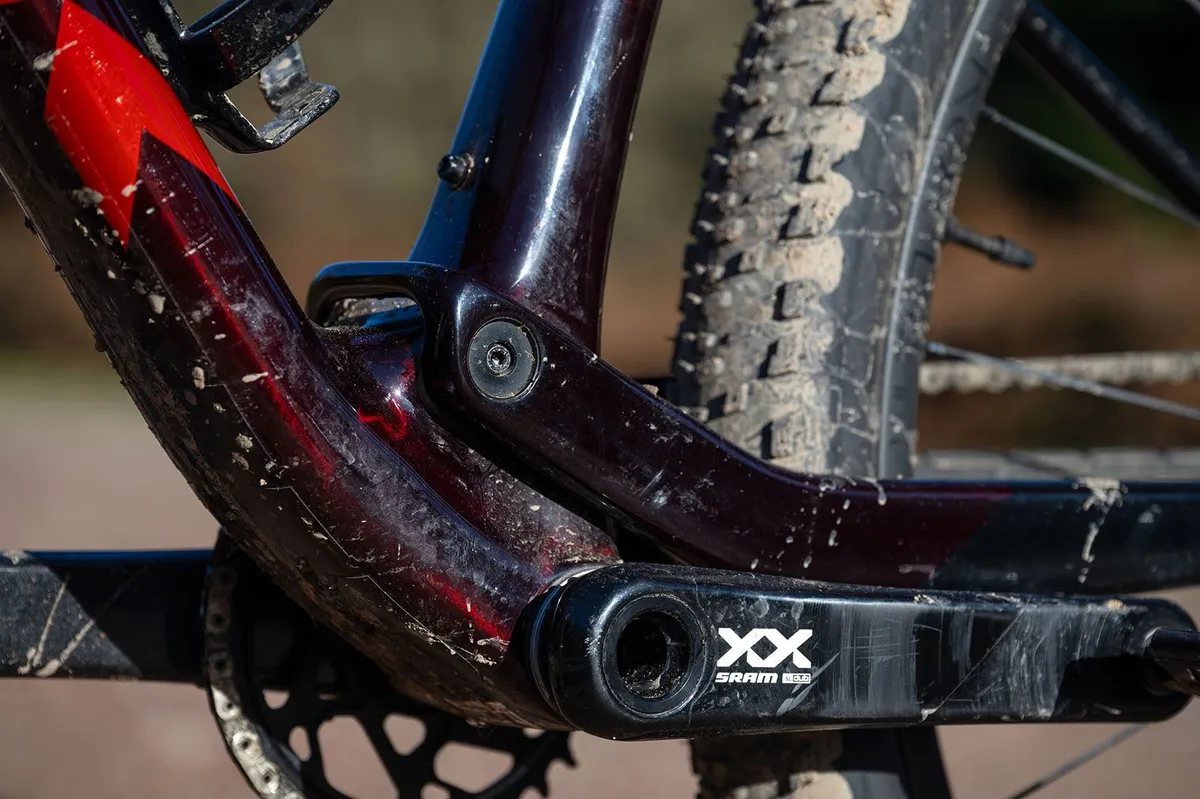
The differences don’t end there, though. Compared to the likes of Trek’s Top Fuel – a short-travel trail bike – the design of the back end of the bike is really quite different.
To help keep weight down, and pedalling efficiency and stiffness as high as possible, the Supercaliber uses a single main pivot. This is located on the seat tube, ahead of and above the bottom bracket. There's no pivot near the rear axle and no rocker link to drive the shock.
Instead, the Supercaliber’s seatstays have flex built into them, instead of a pivot.
The latest bike has also had some work done to its leverage curve, where it’s said to be more sensitive early in the travel and more progressive towards the end. This should ensure it feels more controlled on heavier impacts.
To further boost that pedalling stiffness and responsiveness, Trek opted to use a PF92 bottom bracket because this enabled it to broaden the tubes around the bottom bracket junction, boosting stiffness without impacting the weight.
Inside the front triangle, you’ll find room to fit two water bottles, which is great for those looking to clock big miles or tackle marathon races.
Trek Supercaliber SLR 9.9 XX AXS Gen 2 geometry
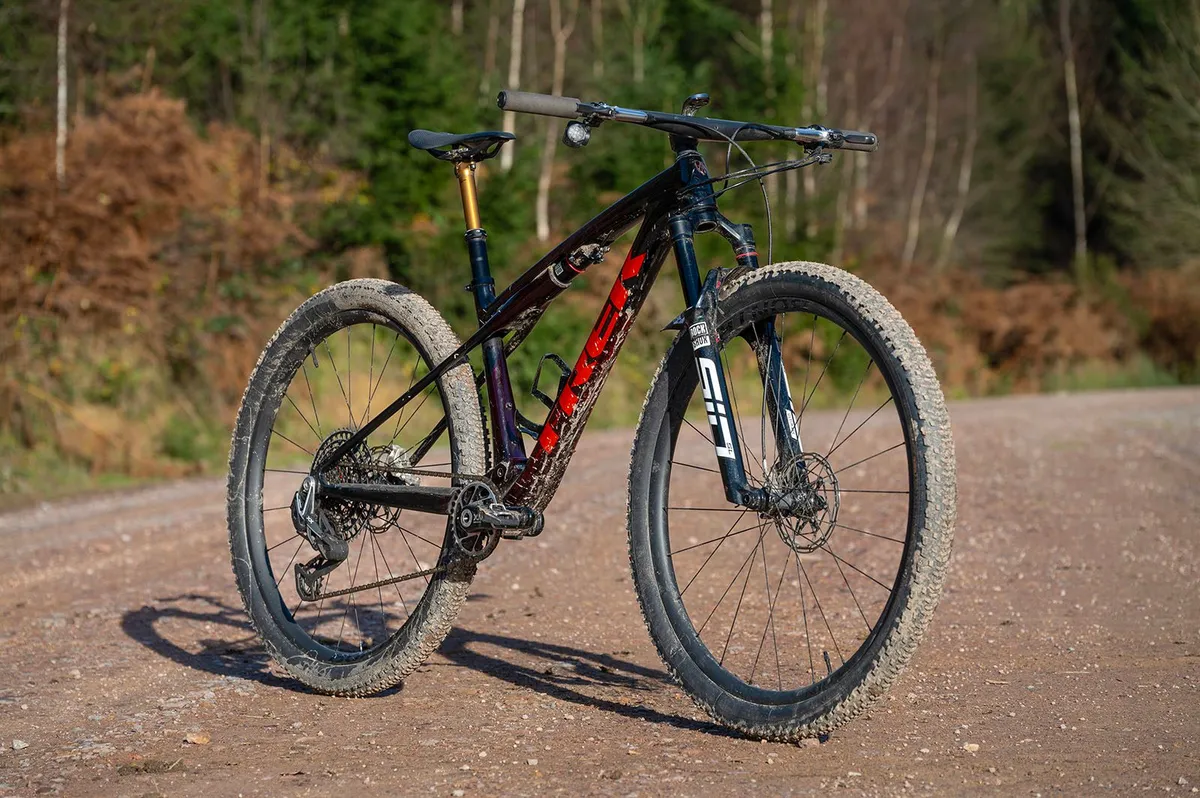
To keep in line with the bump in travel at the rear, the Gen 2 Supercaliber has been designed to accept a 110-120mm travel fork (it comes with a 110mm-travel fork as standard).
Trek has slackened the head angle from 69 to 67.5 degrees to help keep the Supercaliber stable at speed.
There’s less of an alteration with the effective seat tube angle, which steepens by only 0.5 degrees, sitting at 74.5 degrees across all frame sizes.
Reach figures (which come into play once stood up out of the saddle) have grown by 10mm across all frame sizes, with the medium bike tested here measuring 435mm. That's 5mm shorter than the Specialized Epic World Cup, which is designed with similar intent.
The chainstay length has also grown by 5mm, to 435mm, while the bottom bracket is 7mm higher, at 46mm below the wheel axles.
| | S | M | ML | L | XL |
|---|---|---|---|---|---|
| Seat angle (degrees) | 74.5 | 74.5 | 74.5 | 74.5 | 74.5 |
| Head angle (degrees) | 67.5 | 67.5 | 67.5 | 67.5 | 67.5 |
| Chainstay (mm) | 435 | 435 | 435 | 435 | 435 |
| Seat tube (mm) | 395 | 420 | 440 | 460 | 525 |
| Top tube (mm) | 571 | 592 | 605 | 622 | 663 |
| Head tube (mm) | 90 | 90 | 90 | 100 | 125 |
| Fork offset (mm) | 43 | 43 | 43 | 43 | 43 |
| Trail (mm) | 109 | 109 | 109 | 109 | 109 |
| Bottom bracket drop (mm) | 46 | 46 | 46 | 46 | 46 |
| Bottom bracket height (mm) | 327 | 327 | 327 | 327 | 327 |
| Wheelbase (mm) | 1,113 | 1,138 | 1,153 | 1,172 | 1,217 |
| Standover (mm) | 760 | 772 | 772 | 772 | 772 |
| Stack (mm) | 590 | 590 | 590 | 599 | 622 |
| Reach (mm) | 410 | 435 | 450 | 465 | 500 |
Trek Supercaliber SLR 9.9 XX AXS Gen 2 specification
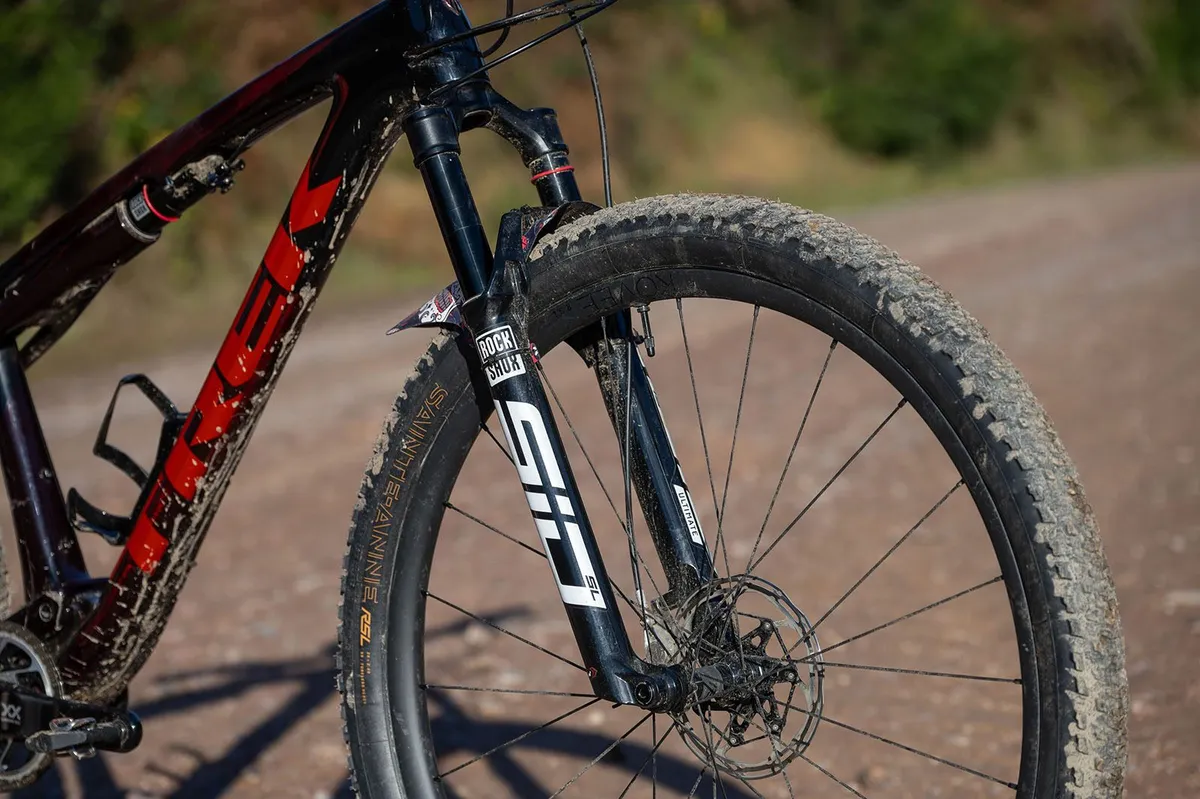
At the front of the Supercaliber SLR 9.9 sits a RockShox SID Ultimate SL fork with 110mm of travel.
Connected to both the fork and shock is the bar-mounted TwistLoc remote. This has been slimmed down compared to the previous version and requires a lighter touch to operate it.
Trek has opted to stick with two-position damping. That means there’s ‘open’ or ‘lock’ to choose from.
SRAM provides its Level Ultimate Stealth brakes, along with the new XX SL Transmission gearing. It’s great that Trek has opted for the four-piston, rather than two-piston brakes, upping stopping power.
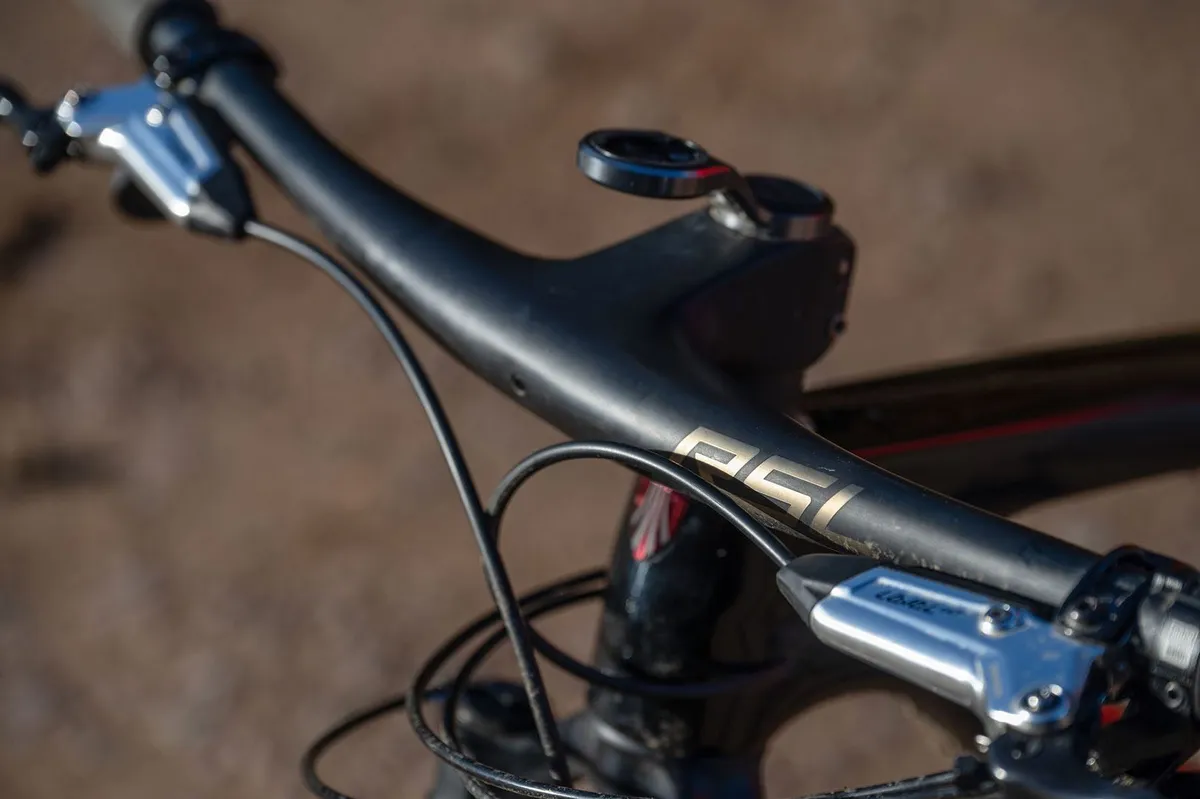
Much of the finishing kit comes from Trek’s parts brand, Bontrager. That includes the RSL one-piece carbon bar and stem. The bar has no rise and is 750mm wide as standard.
Stem length varies as you increase frame size. On the medium, the stem is 70mm with a negative 13mm rise.
Bontrager also supplies its Sainte-Anne RSL XR dual-compound tyres. At 2.2in wide, they’re pretty skinny and I replaced them with 2.4in versions after a couple of rides.
The tyres wrap Bontrager Kovee RSL carbon hoops.
The medium test bike here weighs 9.62kg without pedals.
Trek Supercaliber SLR 9.9 XX AXS Gen 2 setup
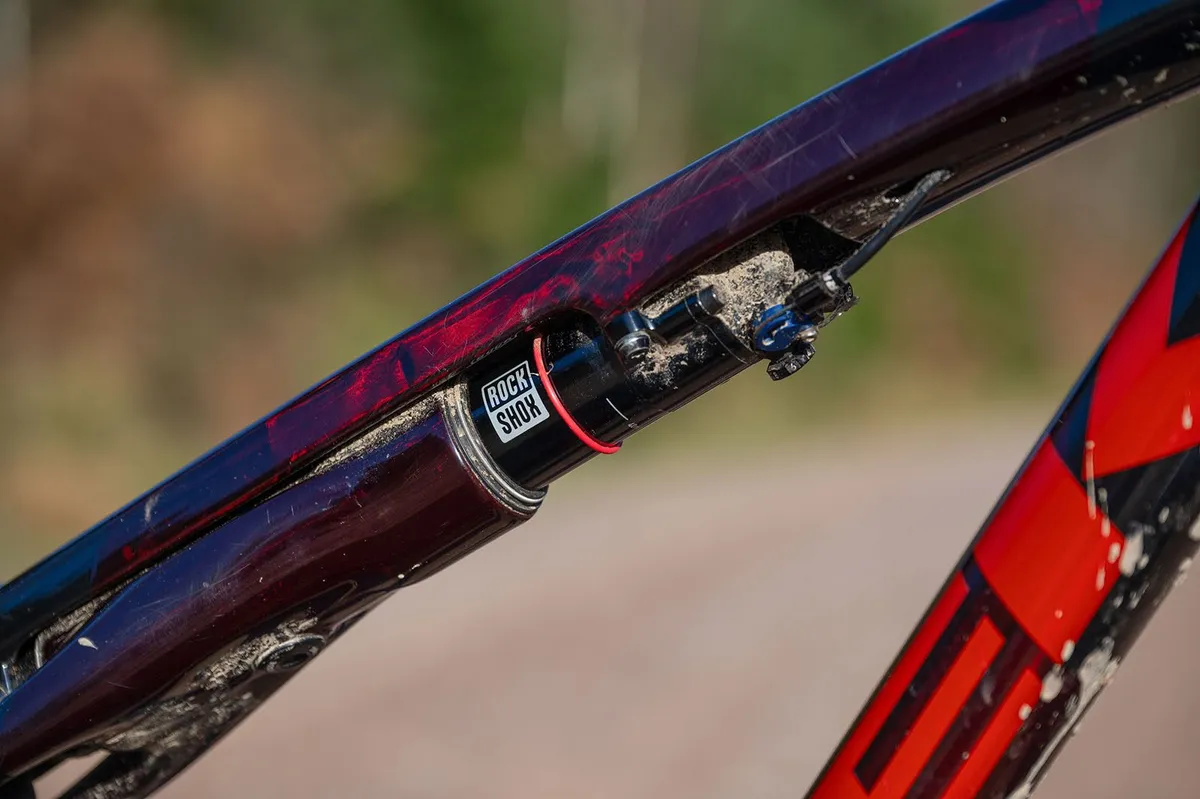
This is my second Supercaliber because the original test bike arrived with a shock issue and was returned to Trek after one ride.
The replacement didn’t suffer from any such problems and was quick and easy to set up.
Getting the sag set is very straightforward thanks to markings on the IsoStrut shock.
After playing with different pressures, I ended up settling on just shy of 35 per cent sag – something Trek said many of its riders would do on rougher race tracks.
For my 66kg weight, that equates to just 60psi – much lower than you’d expect to run on a regular shock.
I opened the rebound up fully on the shock.
Setting the fork to create the most balanced feel possible took a little more time, but I got there in the end. I opted for slightly less pressure than I started with, but a touch more rebound damping in order to match the back end of the bike.
Trek Supercaliber SLR 9.9 XX AXS Gen 2 climbing performance
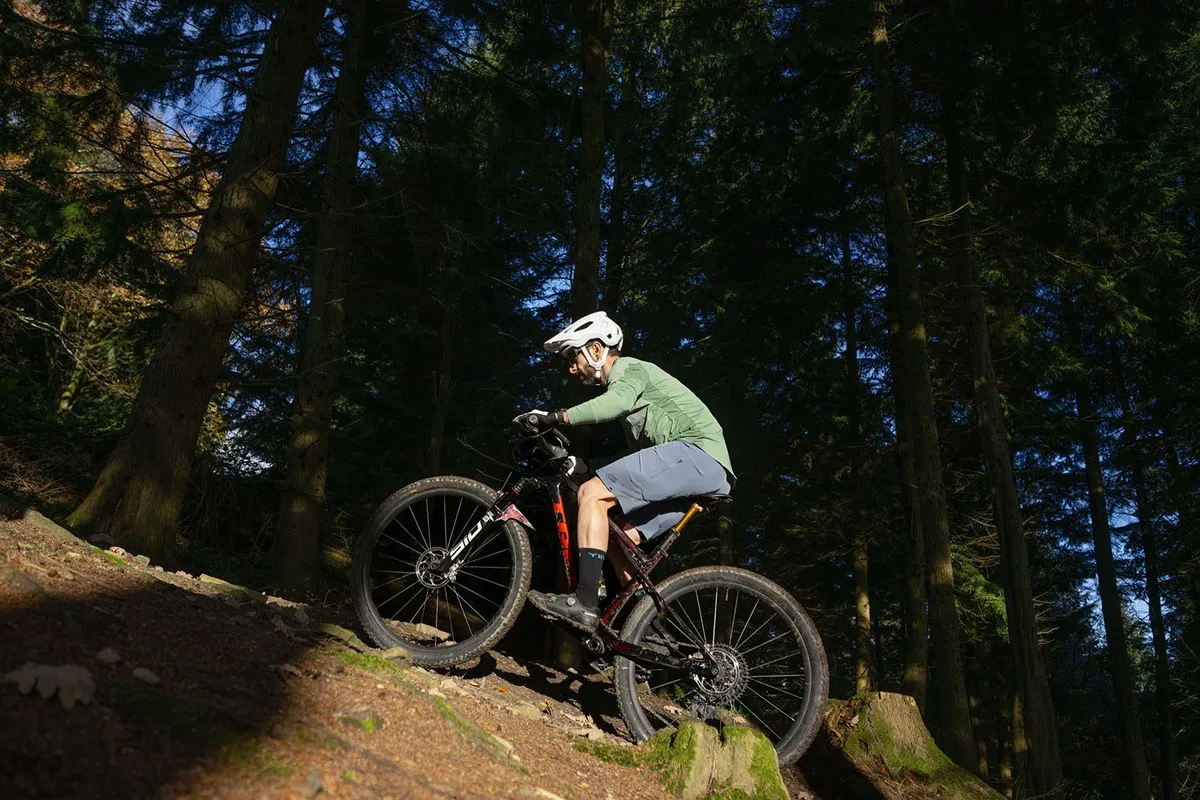
I was initially worried I’d gone overboard with the amount of sag I was running at the rear, but on the trail, those worries quickly disappeared.
That’s because when you’re putting power through the pedals, the Supercaliber is unbelievably stable, with the rear suspension barely moving as you spin the cranks.
Put some effort in, though, and this thing flies.
The low weight and fast-rolling tyres naturally come into play here, too.
Fast and efficient
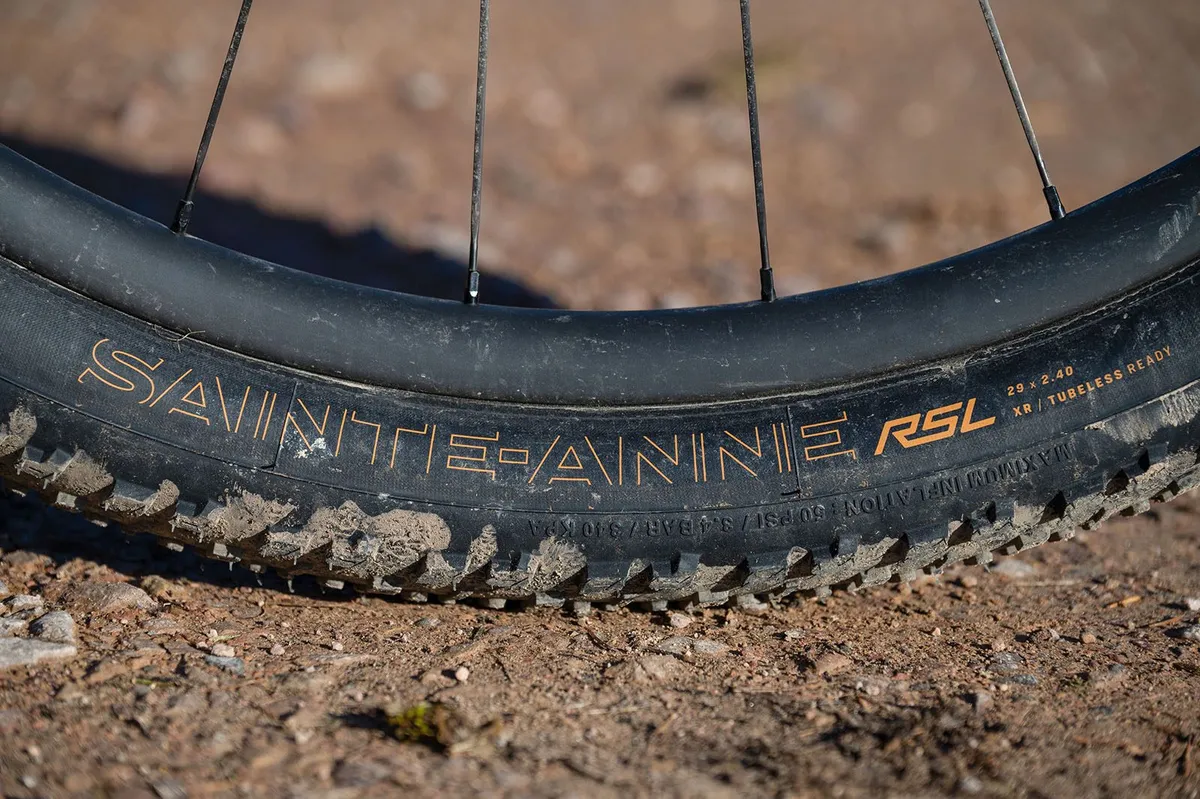
The Supercaliber is taut and reactive when you dump the watts, feeling as though just about every ounce of your effort is being transferred to the rear wheel.
Of course, there’s the option to use the TwistLoc remote and lock both the fork and shock out fully, but because things remain so stable, I rarely used this feature when riding off-road.
That left the back end of the bike free to move when the rear wheel encountered chunkier rocks or roots, helping to keep the tyre in contact with the dirt.
Out-of-the-saddle efforts are met with similar levels of efficiency, too. Get grinding away on a steep incline and it’s almost impossible to feel any suspension bob from the rear end.
Here, thanks to the impressive, very direct power transfer, the only thing holding you back on really steep, slippery pitches is the shallow tread of the rear tyre.
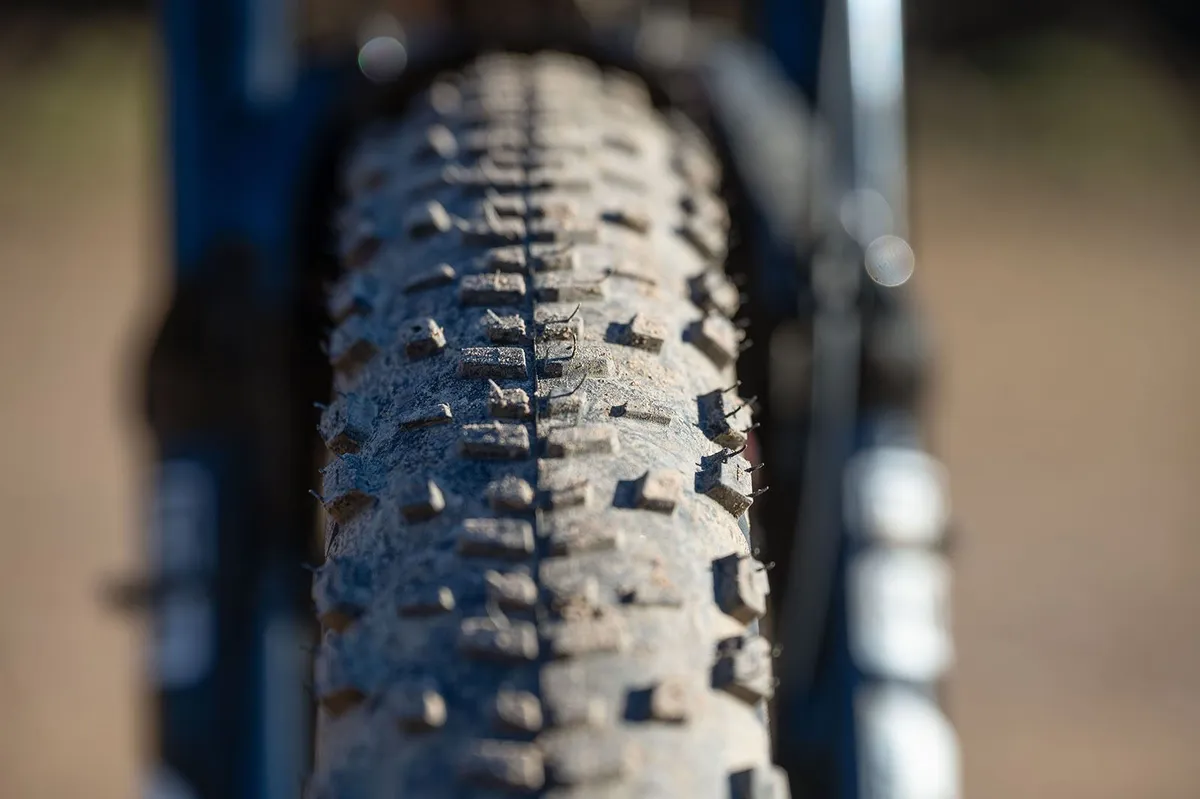
Like a hardtail, though, in these instances it’s the fork that’s moving in time with your pedalling motion.
On longer, smooth fire-road sections or stints on tarmac, locking both the shock and fork out takes a fraction of a second, leaving the bike feeling rock-solid as a result.
While this is great when there’s barely a bump on the trail, anything remotely rough can feel quite jarring and upset grip levels.
Having ridden the three-position damper that RockShox also offers, I missed the fork having the calmer ‘pedal’ position in these cases (the back end is less of an issue because it's incredibly efficient when left ‘open’).
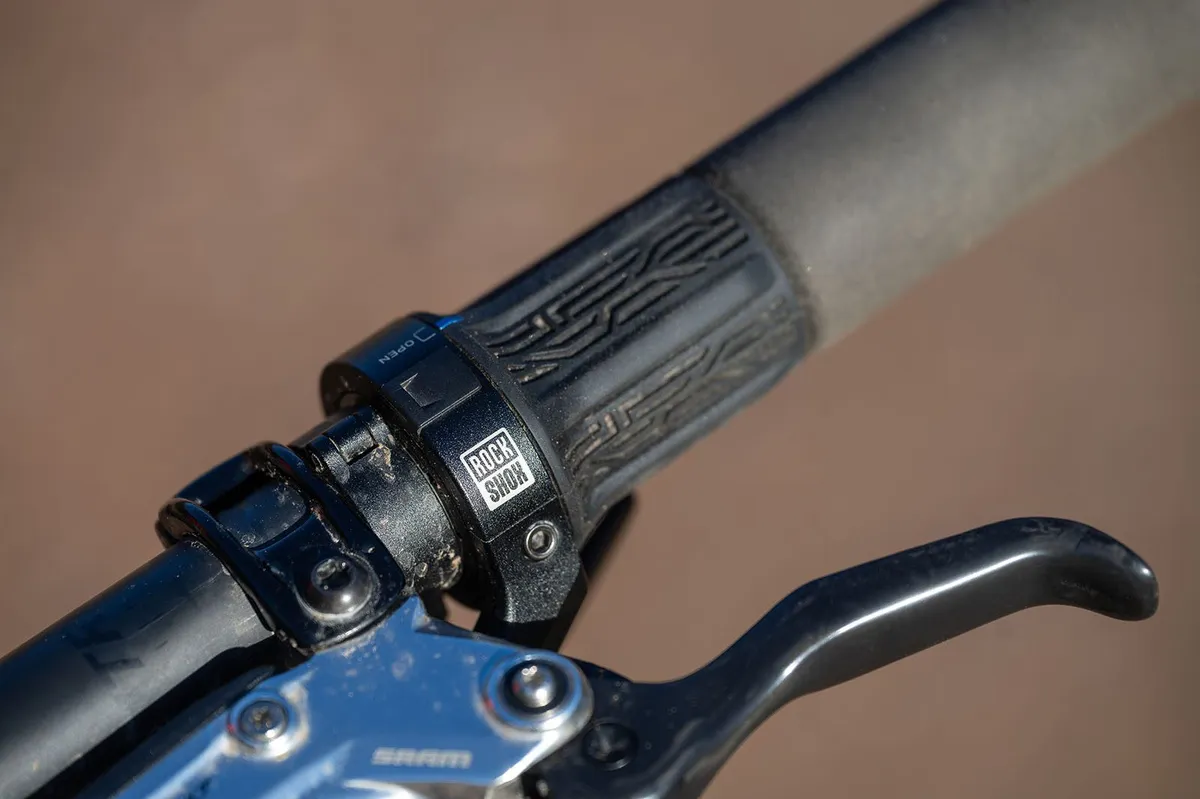
Over time, especially on wetter rides, I noticed the push-on foam grip that butts up against the TwistLoc remote started to spin on the bar.
This can be solved with a bit of grip glue, but wasn’t an issue with the previous TwistLoc setup, which used lock-on grips (although these weren’t as comfortable).
In it for the long haul
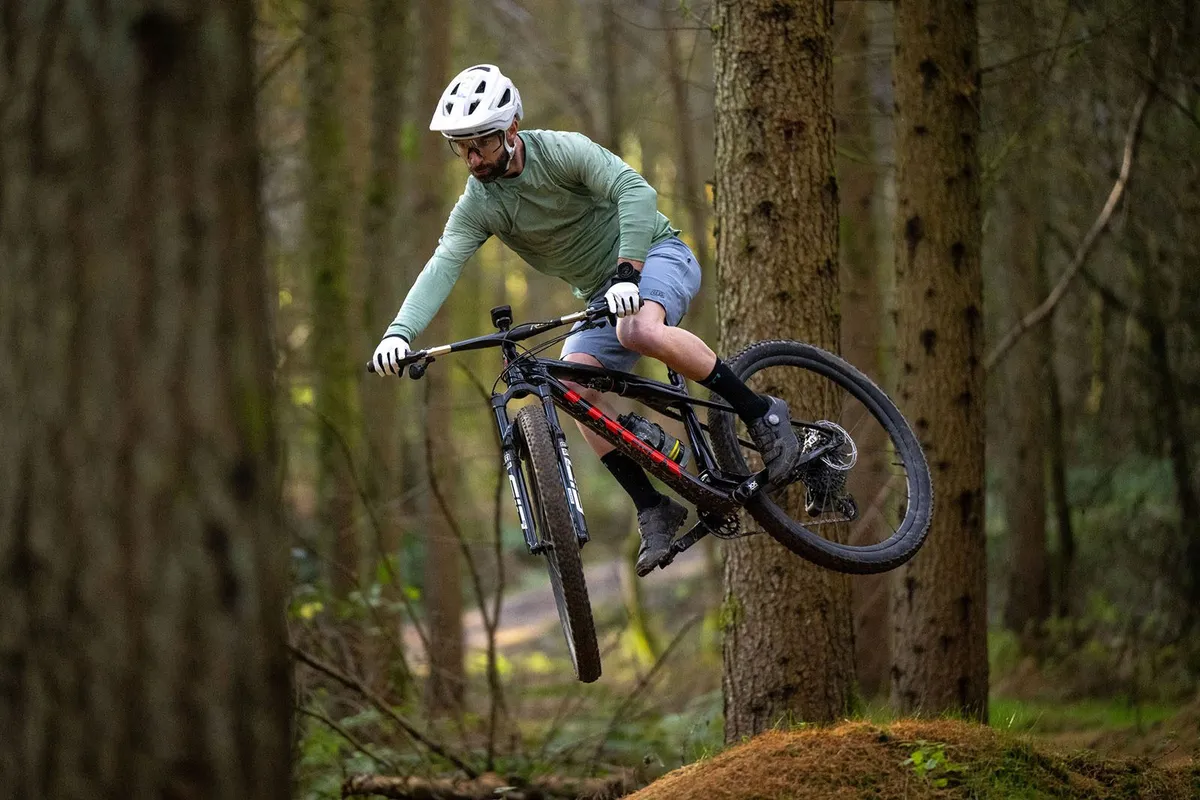
In terms of ride position when seated, at 172cm, I had just enough stretch from the 592mm effective top tube coupled with the negative-rise, 70mm stem.
With the 74.5-degree seat tube angle, too, I felt comfortable on everything from long, flatter rides to steeper, trickier climbs.
On tight uphill switchbacks, I always had enough room to manoeuvre on the bike and never struggled with the front wheel wandering as I wound on the power through the apex.
That said, my rear end didn’t agree with the Aeolus RSL saddle. I prefer something a little narrower than the 145mm option included here.
I also found the back of it pointy enough to snag and tear a pair of shorts when soaking a fast compression on the trail.
Saddle fit is a very subjective topic, though, so not everyone will have the same experience as me here.
Another component I struggled with a little is the one-piece bar and stem. While the stem and bar width felt spot-on, I wanted to alter bar roll, but obviously couldn’t.
Trek has told me it has had no negative feedback from customers on this, so maybe it’s just me. However, if I was to buy this bike, I’d switch this one-piece combo for a more traditional setup from the get-go.
Trek Supercaliber SLR 9.9 XX AXS Gen 2 descending performance
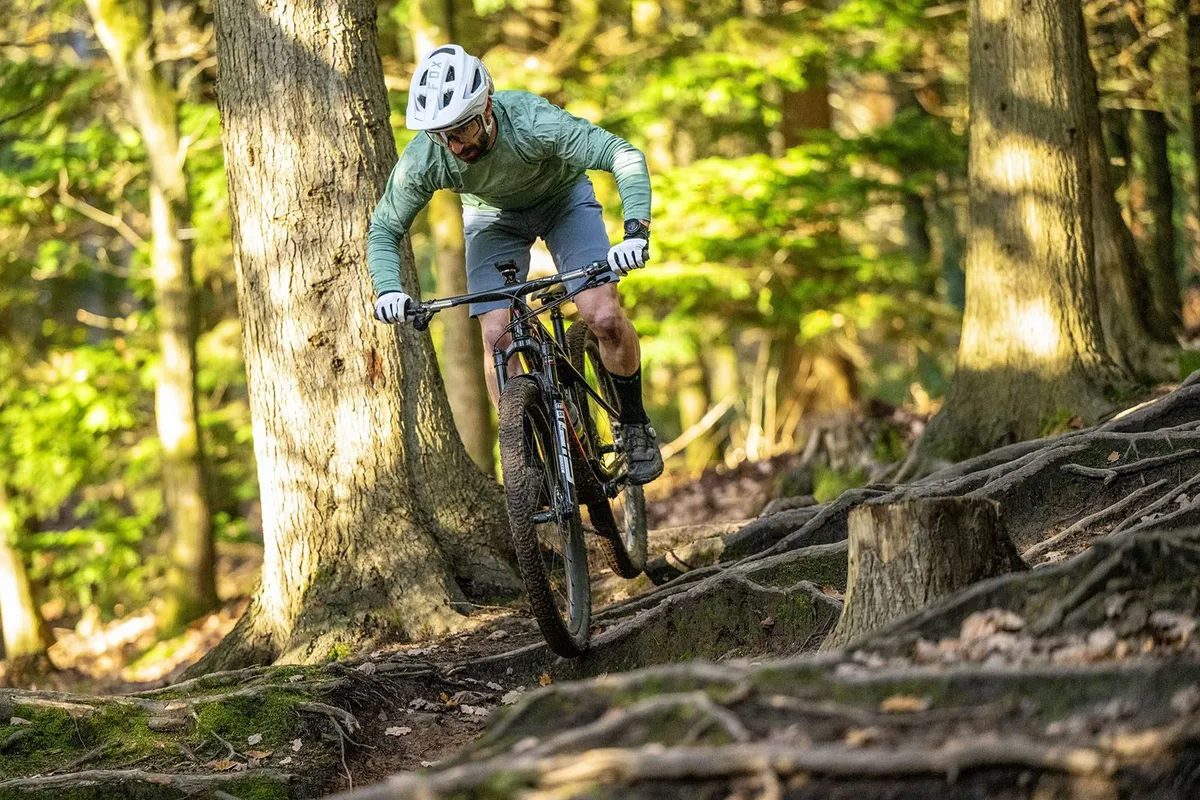
As soon as the gradient tips and the speed picks up, it’s surprising just how capable the Supercaliber feels.
Again, get on the power and the Supercaliber picks up speed with ease. It helps that you can keep on the power and dump gears without letting up, thanks to the SRAM XX SL Transmission gearing.
While there’s no doubting its similarities to a hardtail when climbing, get up out of the saddle and things feel a little more like a regular full-suspension cross-country bike.
Stand up in the centre of the bike and the Supercaliber (depending on how you’ve set it up) will sag comfortably into its travel.
Here, there’s masses of support to push against when carving through turns or pumping through trail undulations.
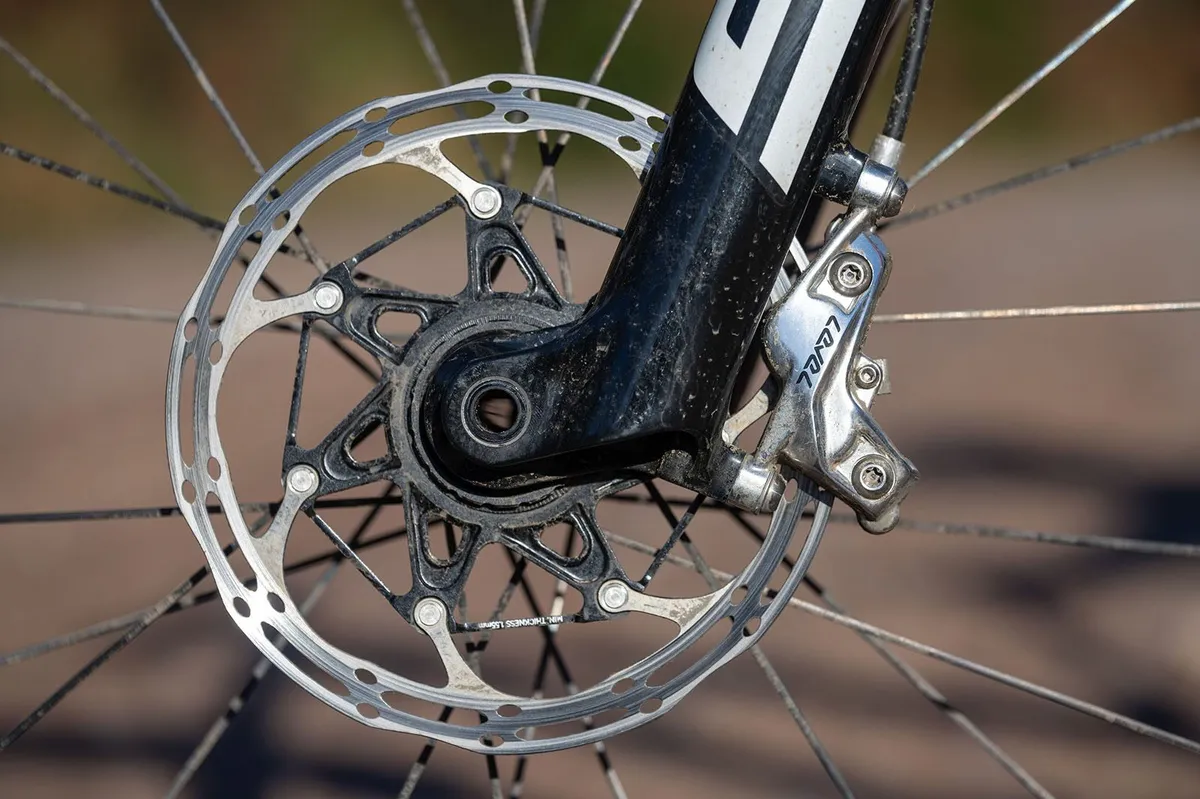
Through rougher sections of trail, the back end of the Supercaliber mutes impacts and quells compressions well, though don’t expect the rear wheel to be tracking every single lump and bump in the trail.
The sensation is more like riding a regular cross-country bike with a heavily damped shock. That means there’s quite a bit of feedback through the frame, but it's forgiving enough to prevent things feeling harsh, uncomfortable or skittish, enabling you to push the Supercaliber hard on the descents.
As well as having enough support through the suspension, even set at a generous 35 per cent sag, there’s ample progression built into the system to handle hefty impacts if you get a little carried away when the pace picks up.
That only adds to the overall feel of control. While you can use all 80mm of travel when pushing hard, when you reach the limit, things remain impressively controlled.
Staying in control
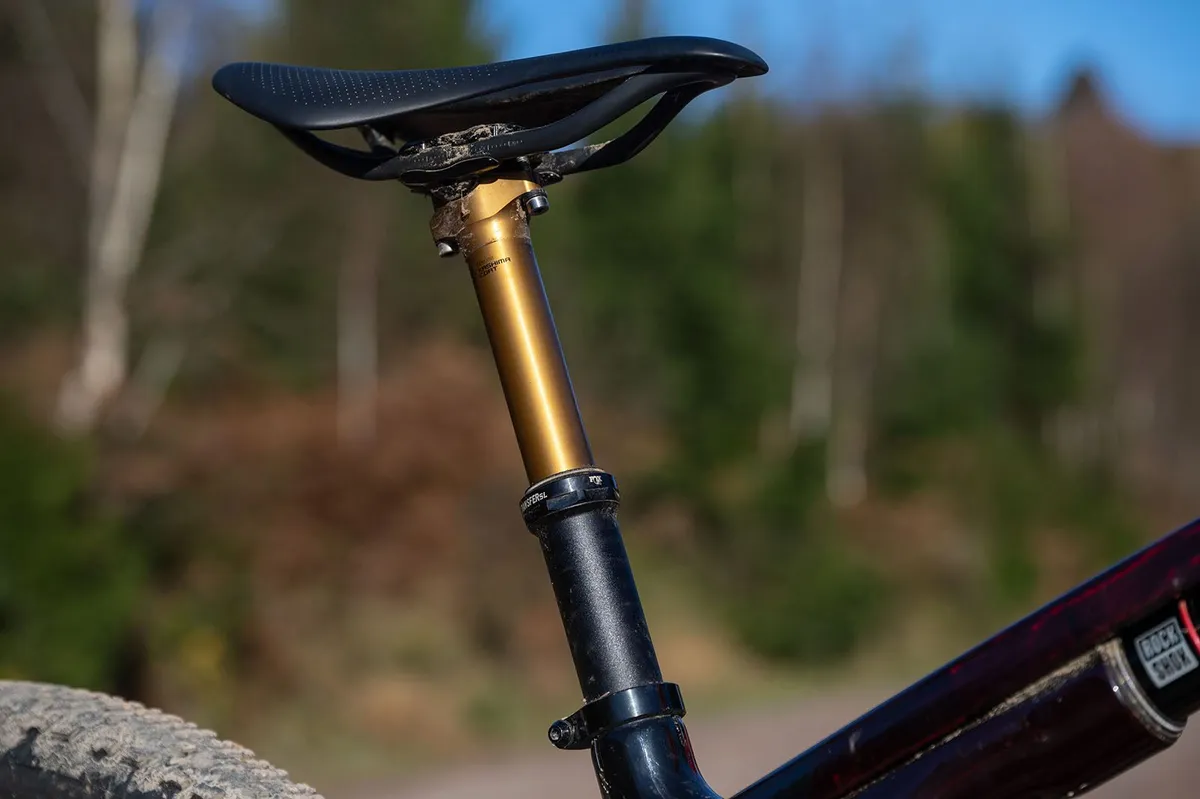
It’s not just the suspension action that enables you to crack on and belt down the hills, though.
Trek has specced all Gen 2 Supercalibers with a dropper post. Yes, many cross-country bikes come with droppers now, but there are still some, including the latest Specialized Epic World Cup, that use a fixed post instead.
Droppers add to a bike's overall weight, but the benefits more than outweigh those extra grams in my opinion, even on a thoroughbred XC race machine.
Getting the saddle down and out of the way helps to keep you centred on the bike. This makes it easier to shift your weight where it’s needed most in order to keep the fast-rolling tyres gripping and more confidently tackle steep or technical sections of trail.
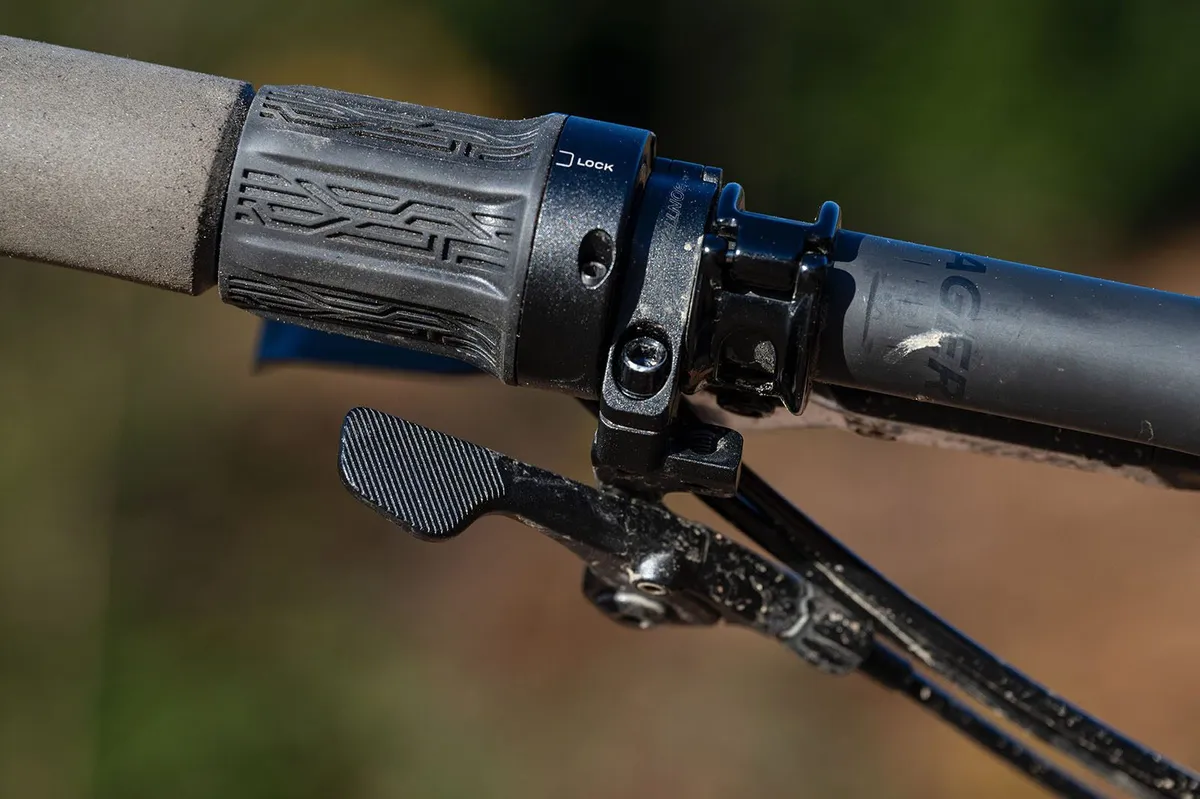
Further enhancing the Supercaliber's ability to descend are the four-piston Level Ultimate brakes.
Like the dropper post conundrum, with many brands looking for the lowest headline weight possible, smaller two-piston calipers are usually the go-to.
However, four-piston calipers offer more punch and control – a real plus for descending in adverse conditions – so to see them here and reap the benefits when it counts is a real plus.
Bizarrely, if you go by the numbers quoted on the SRAM site, these bigger brakes are 9g lighter than the smaller two-piston equivalents. So it’s a win all-round.
The sum of the parts
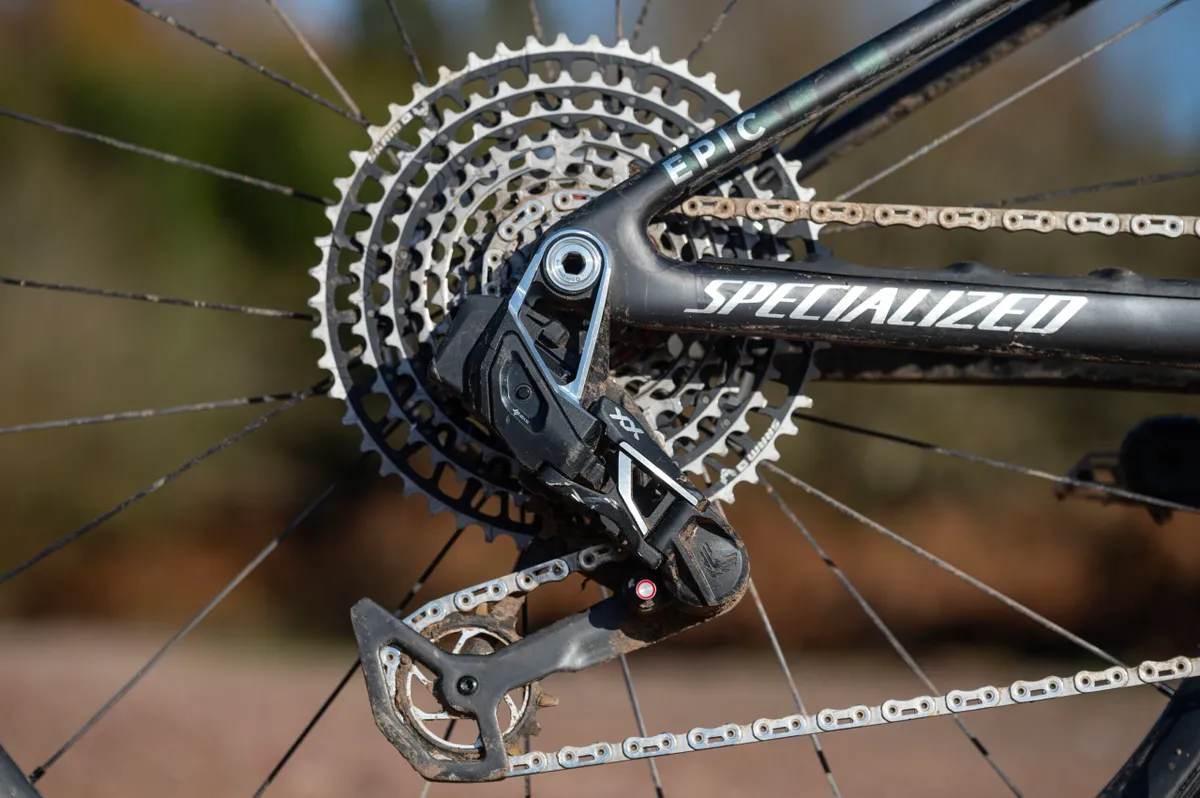
Trek has managed to keep the overall weight impressively low. This has not meant scrimping on key parts that help to make the Supercaliber not only a proper XC race bike, but also a bike that can handle long stints on tougher trails.
This was highlighted when I tackled a rough UK trail centre loop in atrocious conditions.
With the wind howling and rain blasting down, I was surprised just how comfortable I felt when tackling battered, rough and rocky descents at speed.
There’s no denying the Supercaliber’s racing pedigree, but it’s good to know it'll hold its own outside of the tapes, too. Sure, it’s not the plushest or most comfortable ride, but it's not so specific that it's limited to one thing and one thing only.
How does the Trek Supercaliber SLR 9.9 XX AXS Gen 2 compare?
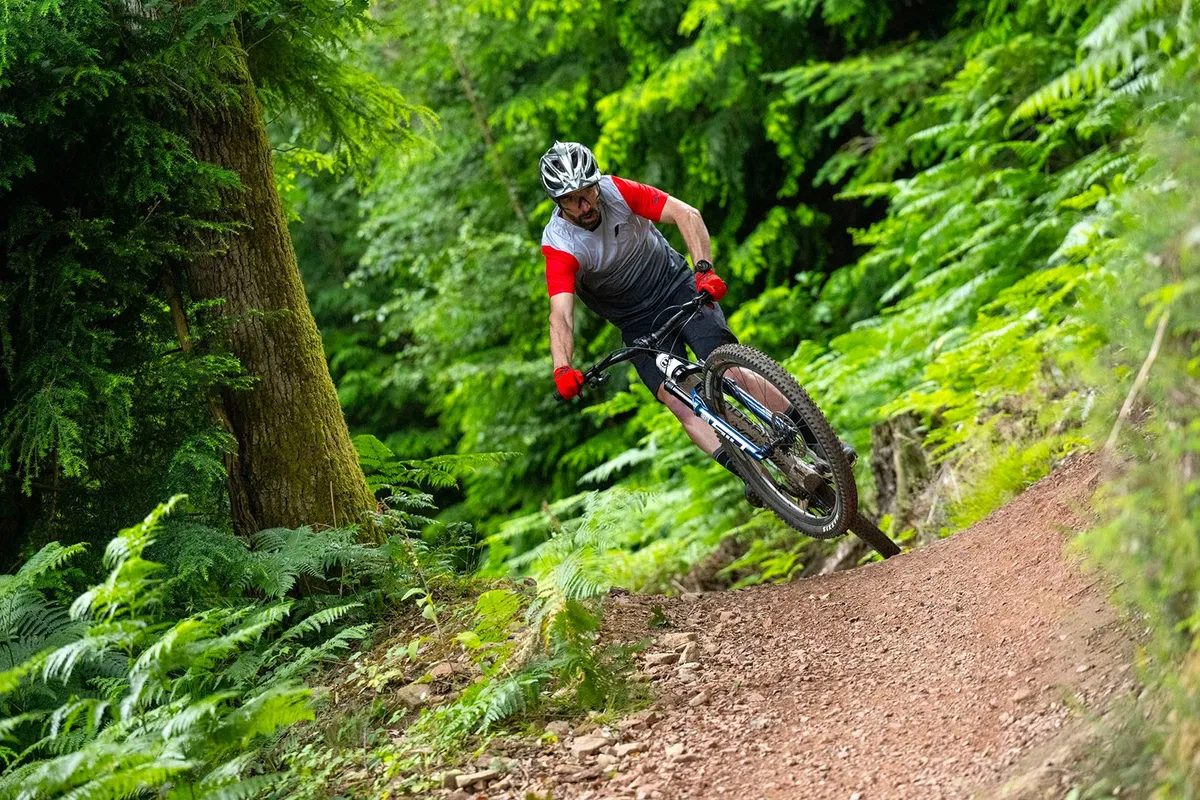
Having spent so much time aboard the previous-generation Mondraker Podium, I’ll draw most of my comparisons with that bike.
The Podium features 100mm of travel – only 20mm more than the Supercaliber – but it’s delivered via Mondraker’s twin-link virtual pivot system and a regular shock.
I found the biggest differences between the two bikes were in power transfer and climbing.
Although the Mondraker is no slouch, the contrast between the two when pointed uphill is stark. That’s down largely to how stiff, taut and stable the Supercaliber feels when really pounding the pedals.
That means the Supercaliber surges forward with very little effort. The Mondraker is stable, but not to the same extent, leaving it feeling less efficient, especially when up out of the saddle and sprinting.
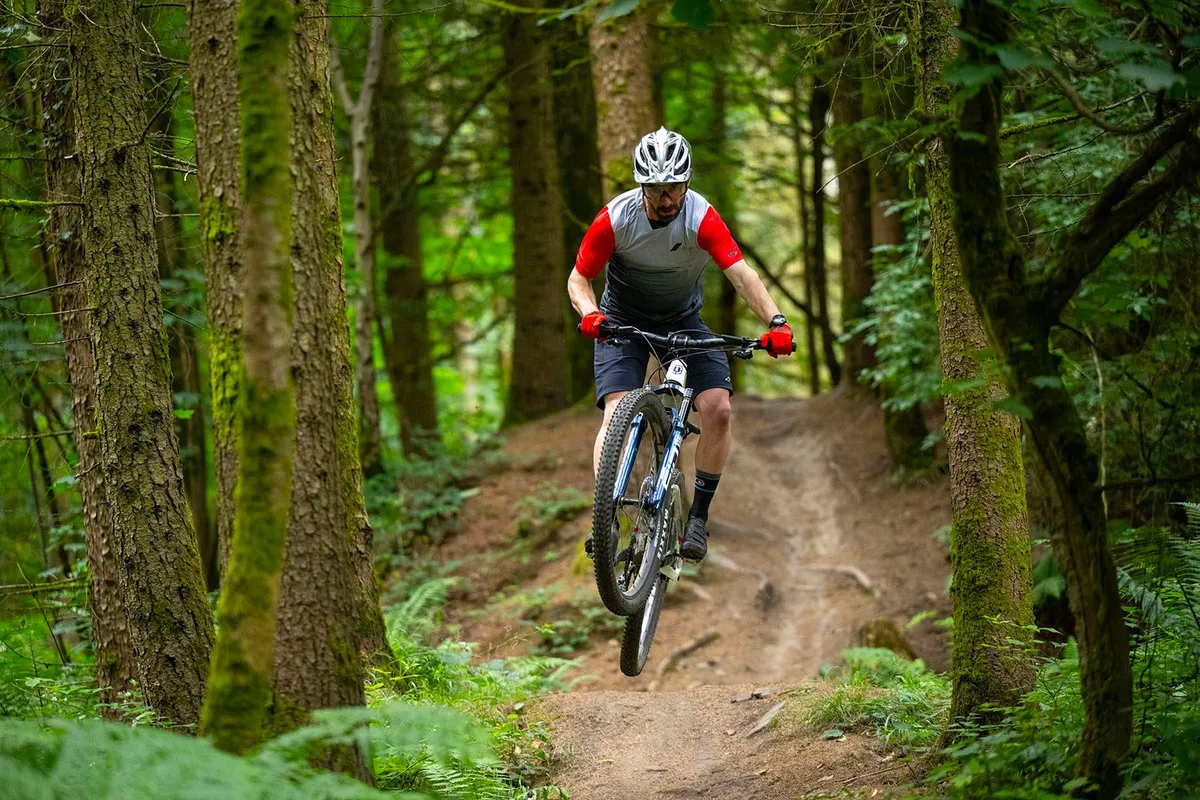
On the descents, Mondraker’s more traditional design offers a more supple suspension action and confident feel on demanding sections of trail. It helps that the reach is longer, bolstering downhill stability further.
That’s not to say the Trek can’t keep up, though. It just means you’re more likely to be teetering closer to the edge of the Trek’s limits sooner than you are on the Mondraker.
Overall, if it’s a pure race bike you’re after, that’s still deceptively capable on more demanding trails, the Trek takes top honours here.
It can’t match the comfort or top-end confidence levels of the Mondraker on the descents. Yet the feeling it conjures up as soon as you hammer the pedals, and the ease with which it accelerates and climbs, simply can’t be ignored.
Trek Supercaliber SLR 9.9 XX AXS Gen 2 bottom line
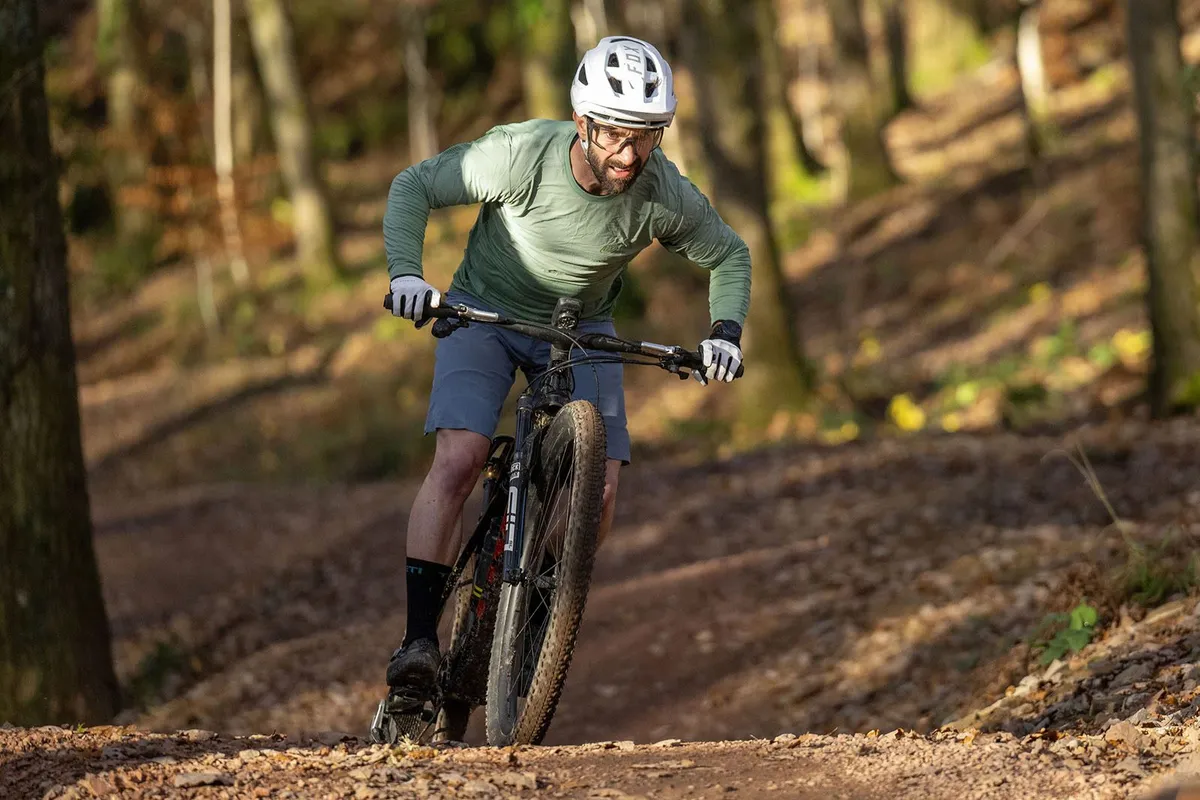
Does the new Gen 2 pedal as well as a hardtail? Well, not quite, but it doesn’t feel that far off, even when you're out of the saddle and really grinding a gear.
What’s impressive is that it still offers some of the control and composure of a regular full-suspension mountain bike, but still feels that bit more efficient.
Don’t get me wrong here, this bike is efficient in almost all aspects of the ride – from how well it delivers power to the rear wheel, to how measured it feels when using the 80mm of suspension.
However, the suspension does work. Combined with the dropper post and punchier four-piston brakes, it helps create a bike that feels both energetic and urgent on the climbs, but more capable than expected when descending.
Product
| Brand | Trek |
| Price | £10800.00, $11700.00 |
| Weight | 9.62kg |
Features
| Fork | RockShox SID SL Ultimate, 110mm travel |
| Stem | Bontrager RSL Integrated OCLV Mountain Carbon 750mm wide, 70mm stem |
| Chain | SRAM XX Eagle |
| Frame | SLR OCLV Carbon, 80mm travel |
| Tyres | Bontrager Saint-Anne RSL XR, 29x2.2in |
| Brakes | SRAM Level Ultimate Stealth (160mm rotors) |
| Cranks | SRAM XX SL Eagle |
| Saddle | Bontrager Aeolus RSL |
| Wheels | Bontrager Kovee RSL OCLV Mountain Carbon |
| Shifter | SRAM AXS Pod Ultimate |
| Cassette | SRAM Eagle XS-1299 Transmission |
| Seatpost | Fox Transfer SL, 100mm drop |
| Grips/tape | RockShox foam push-on |
| Handlebar | Bontrager RSL Integrated OCLV Mountain Carbon 750mm wide, 70mm stem |
| Rear shock | Trek IsoStrut RockShox SIDLuxe |
| Available sizes | S, M, ML, L, XL |
| Rear derailleur | SRAM XX SL Transmission |
